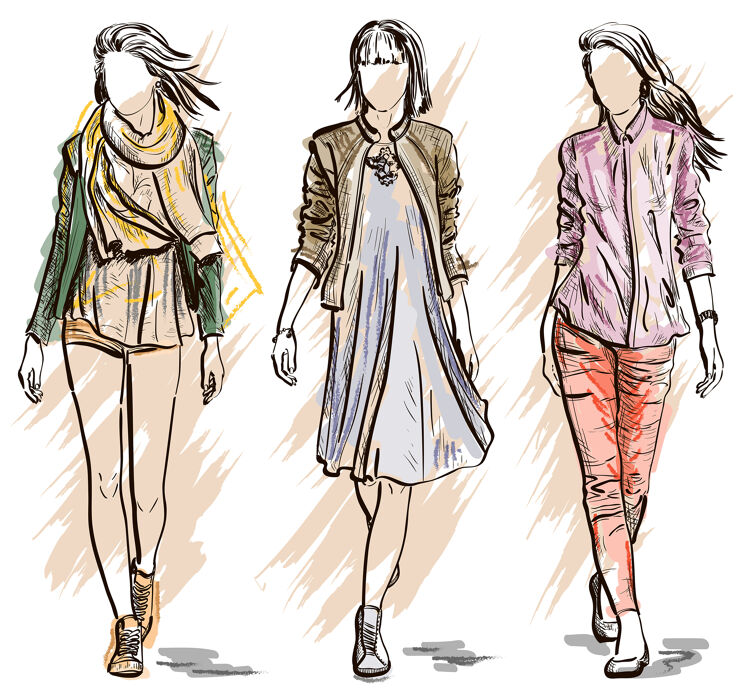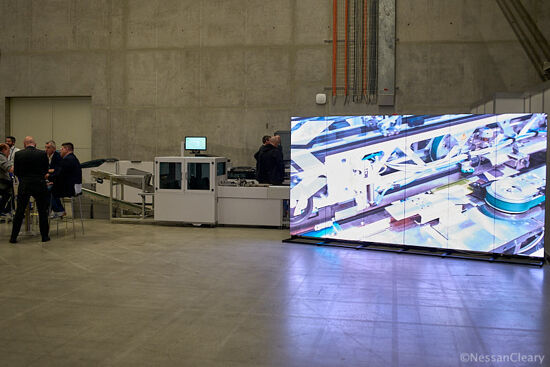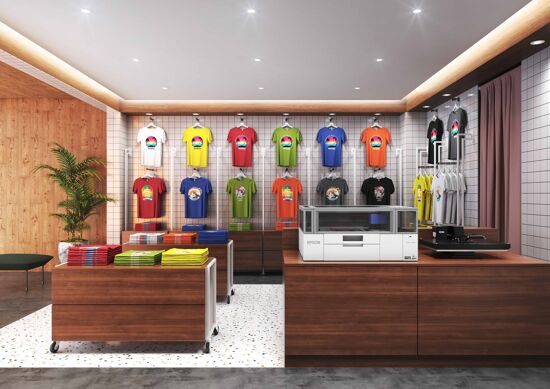What are the Challenges when Starting a Designer Fashion Brand?

Debbie McKeegan shares insights on the evolving marketplace for designer fashion brands. In addition, she details the challenges faced when creating a designer Fashion brand.
The Designer brand exists in many forms across the apparel landscape (online and off) from couture garments to streetwear, sportswear and accessories.
Print on Demand using digital ink jet technologies has unlocked the fashion sector to facilitate small scale personalised manufacturing. The availability of printed fabric, customised to meet your garment specifications – pattern, print and fabric type now enables independent fashion brands to flourish, online and off.
 Caption: Creating your own brand is now an affordable option for the fashion creative, however, difficulties remain for the availability of manufacturing garments on-demand.
Caption: Creating your own brand is now an affordable option for the fashion creative, however, difficulties remain for the availability of manufacturing garments on-demand.
Traditionally, the seasonal catwalk, was the launch pad for the apparel industry and the gateway for buyers to preview and order new collections. This closed network has also evolved, and now offers catwalk access for privileged B2C clients who are invited to purchase directly with exclusive online access. Designers of all scales use this format to gage consumer appetite, only commissioning stock when demand is known. B2C Pre-Order is now a well-used sales tool by the fashion industry. It creates exclusivity and feeds gratification – both of which are now important to the fashionista.
As the online audience and ecommerce marketplace continues to evolve, so does the choice of launch media for the fashion industry. Signposting an on-line and on-demand future for apparel. The accelerated adoption of online presentations either formal or informal using platforms such as Instagram or TikTok, now provide instant access to the targeted consumer delivering instant sales, data and analytics. Unlocking the sector to the independent designer.
Building a strong brand identity is critical, the liberated designer must have an online presence, and must connect directly to the consumer (consistently) to build brand loyalty and generate sales. It’s worth noting that designers were once excluded from selling direct to the consumer when working with retail stores. It’s now recognised that the Brand and its following is crucial to its sales success – online and on the high street.
Hybrid Retail is now an established format, the designer can sell B2B and B2C together, further accelerating on-demand production. The fashion environment remains complicated and deeply troubled – economic conditions and the ability to manufacture sustainably challenge every sector, regardless of scale. Yet, as the worlds affluence increases – the Fashion industry remains set for continued growth and offers many opportunities.
 Caption: “We are at our core a product development house, that means we offer pattern making, sample making and grading services for the industry from established labels through to start up designers.” Julia Van Der Sommen
Caption: “We are at our core a product development house, that means we offer pattern making, sample making and grading services for the industry from established labels through to start up designers.” Julia Van Der Sommen
Establishing and maintaining a successful brand is a challenging process for the Fashion designer. Talent and creativity must be equally balanced with business acumen for continued success. Over the last few years, in a difficult economic climate, we have seen some of the biggest names flounder and disappear.
Online sales and the digital twin. Whilst we now have the ability to create our garments in 3D, the independent designer must also create physical samples to develop both their collections and their manufacturing routes. It’s here where many of the challenges occur. Software can help, but it relies on the manufacturing knowledge of the operator. Sampling is often the biggest stumbling block and yields the biggest learning curve. Yet, the garment sample sets all of the parameters for manufacture and irons out waste, technical issues and importantly sets accurate costings.
Historically, and often incorrectly, landed price per garment has been the defining factor. During the pandemic many brands were forced to switch to nearshore manufacturing, with surprising results.
For the independent, nearshore production offers many incentives and can present better value. Working with a local supplier aids transparency and builds trust, it’s important to visit your manufacturer and identify that their working practices meet your expectations. One of the biggest challenges for emerging designers is knowledge. Brutally speaking – Designers are taught how to create garments, and often not how to manufacture them. Building a strong relationship with your manufacturing partners yields knowledge transfer, avoiding many pitfalls and unnecessary expenses along the way.
Online access to expert services has also helped to unlock access to knowledge – product development, pricing, and the true cost of manufacture. Julia Van Der Sommen of The Sample Room, based in Australia offers a sampling service (and much more…). Designers can work with the team to create an essential tech pack for the garment, allowing the designer to reach out to manufacturers for accurate costings. Their academy also works with creatives online to learn the basics and build their product portfolio. Tooled with the correct information the designer can determine whether to manufacture locally or choose offshore perhaps for larger volumes.
 Caption: The availability of printed fabric, customised to meet your garment specifications – pattern, print and fabric type now enables independent fashion brands to flourish, online and off
Caption: The availability of printed fabric, customised to meet your garment specifications – pattern, print and fabric type now enables independent fashion brands to flourish, online and off
Julia explained “So often people say to me, I didn’t realise that you did that. We are at our core a product development house, that means we offer pattern making, sample making and grading services for the industry from established labels through to start up designers. We also offer Manufacturing for products developed in-house but now also offer this service for products that have been developed elsewhere.
And are also very well known for our dedicated services in assisting start up designers through our education and mentoring program The Fashion Label Launchpad. This program has successfully launched 100’s of start-ups and is the reason we are the No.1 recommended business for start-up designers to go to by the industry”.
Other developments supporting on-demand fashion manufacturing are Smart Hubs.
BMC.Fashion, based in the US offer a personalised manufacturing service for the designer brand. This state-of-the-art production plant uses data, and robotics to automate the production of thousands of personalised apparel SKU’s and printed garments. They also offer their own software suite for the creation of patterns and pre-production samples.
In the UK, Fashion Enter offer a wide range of services. Working with emerging designers they offer accredited courses for fashion design and manufacturing. Recently partnering with Kornit Digital, the factory based in the heart of London, offers digital textile print-on-demand with sewn production bolted on, alongside an academy.
These commercial operations are built for a new era of fashion, and as such they offer sustainable production, tailored to the meet client demand. Encouraging creativity, reducing wasted time, materials and resources whilst nurturing entrepreneurial growth. Investing in new technology as it emerges, they remain primed to address new developments and market shifts.
Using digital technologies, you can design your own garments in minutes. The array of CAD design packages now available via subscription accelerates this trend further. Creating your own brand is now an affordable option for the fashion creative, however, difficulties remain for the availability of manufacturing garments on-demand. The skills gap is real. Whilst digital technologies for printed garments have democratised the print sector – sewn production availability and garment sampling remain challenging for the independent designer. The sector offers an exciting commercial opportunity for high tech manufacturing units using smart technologies worldwide.
Smart Hubs for printed, sewn manufacturing can offer the fashion industry on-demand production and nearshore manufacturing combined.
Sourcing your partners and stakeholders carefully is essential to the success of any designer business, regardless of product. Securing and maintaining close contact with partners and customers is equally important. As the sector evolves, there are many roads to market and many new business models, but their success depends on knowledge transfer, and the development of a smart hub infrastructure.
Topics
Interested in joining our community?
Enquire today about joining your local FESPA Association or FESPA Direct
Recent news

What are the current trends for digital screens?
Digital screens are evolving rapidly, moving beyond simple signage. MicroLED technology improves resolution and efficiency, while 3D and AR displays offer immersive experiences. AI is transforming content creation and analytics, personalising interactions and optimising screen placement. Larger, wall-sized screens and temporary rentals at events are becoming more common. As screens become ubiquitous, innovation focuses on eye-catching solutions to maintain audience engagement.

Hints and tips for vehicle wrapping success
While rising demand for vehicle wrapping is good news for the industry, this is placing more pressure on companies to deliver quality work at a solid pace. Here, Rob Fletcher picks up some tips from several experts in this sector to help wrappers operate smoothly.

What are the opportunities in Personalisation for Sportwear and Signage?
Rob Fletcher discusses the growing importance of personalisation and digital innovation across sectors. Major brands use personalised print to engage customers and boost sales. Personalised sportswear demand is increasing, and companies like Eurojersey embrace sustainable manufacturing and digital transformation.
.png?width=550)
What qualities do you think visionaries in print should have with Jacek Stencel
We speak to Jacek Stencel, owner and founder of PASJIA (FESPA's Polish Association) about the role of visionaries in print, his vision for the future of the printing industry and why he enjoys attending FESPA and how he believes visionaries can inspire new talent to work in the speciality print market.